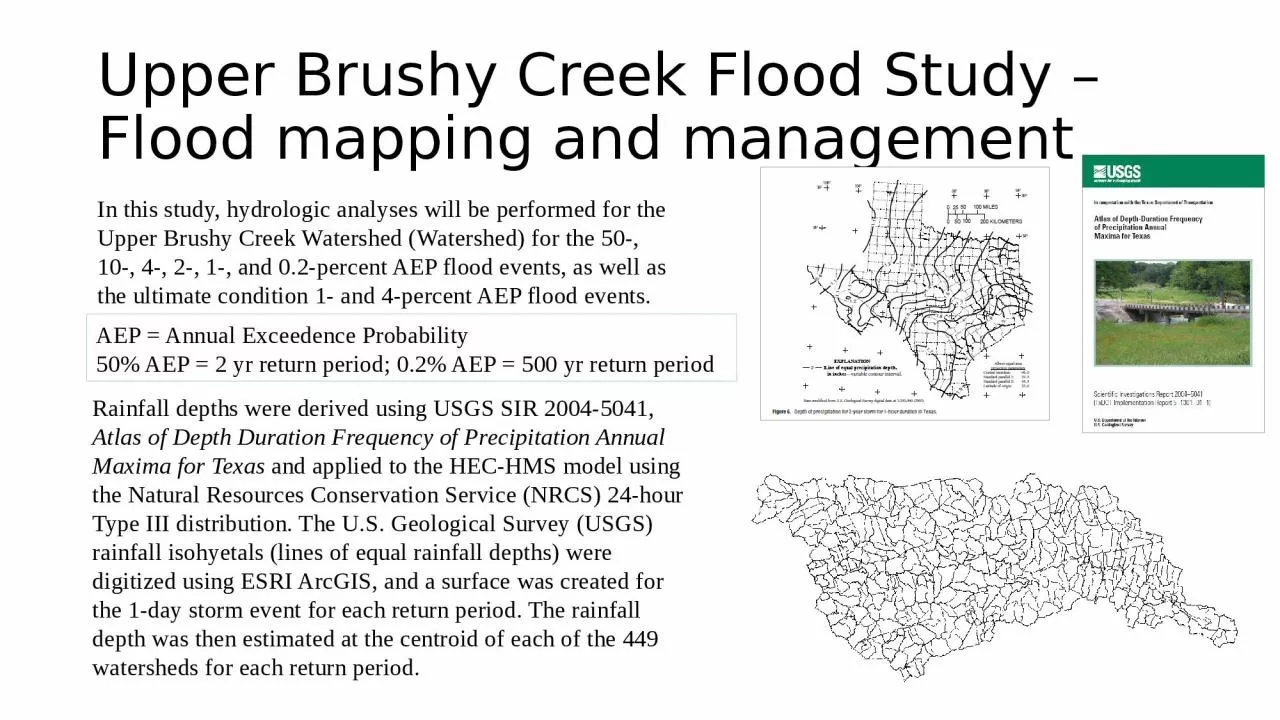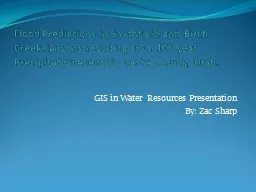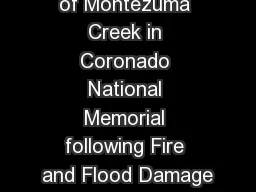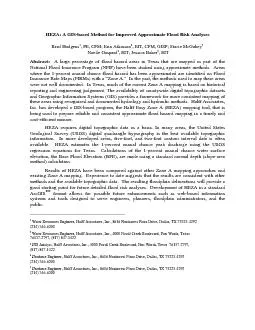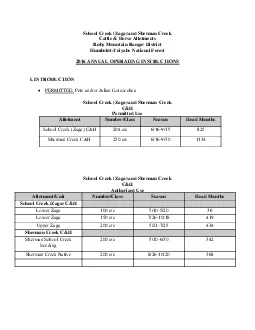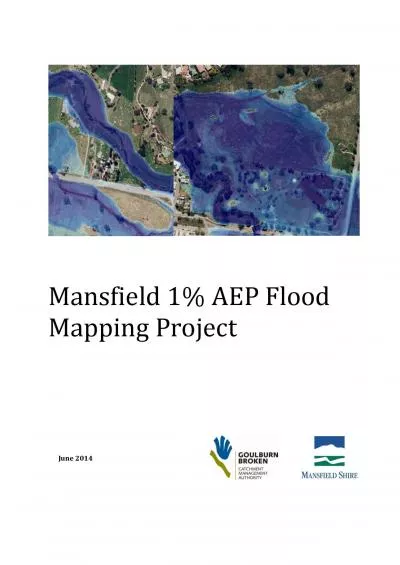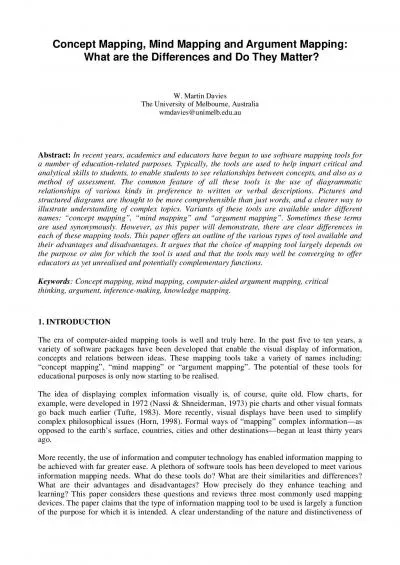PPT-Upper Brushy Creek Flood Study – Flood mapping and management
Author : phoebe | Published Date : 2023-10-26
Rainfall depths were derived using USGS SIR 20045041 Atlas of Depth Duration Frequency of Precipitation Annual Maxima for Texas and applied to the HECHMS model
Presentation Embed Code
Download Presentation
Download Presentation The PPT/PDF document "Upper Brushy Creek Flood Study – Flood..." is the property of its rightful owner. Permission is granted to download and print the materials on this website for personal, non-commercial use only, and to display it on your personal computer provided you do not modify the materials and that you retain all copyright notices contained in the materials. By downloading content from our website, you accept the terms of this agreement.
Upper Brushy Creek Flood Study – Flood mapping and management: Transcript
Download Rules Of Document
"Upper Brushy Creek Flood Study – Flood mapping and management"The content belongs to its owner. You may download and print it for personal use, without modification, and keep all copyright notices. By downloading, you agree to these terms.
Related Documents

